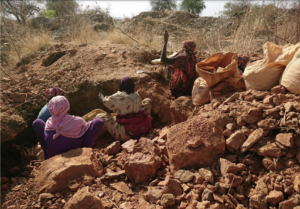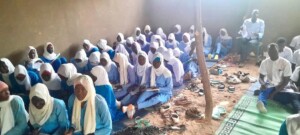Sudan OCHA bulletin 9: Over 85,000 South Sudanese refugees arrive in Sudan in 2017
More than 85,000 South Sudanese refugees have arrived in Sudan since the beginning of 2017, according to the UN Refugee Agency (UNHCR).
UNHCR estimates that nearly 380,000 refugees have fled to Sudan since December 2013. The agency and partners are now anticipating that up to 180,000 new arrivals from South Sudan may arrive by the end of 2017, the UN Office for Humanitarian Affairs (OCHA) in Sudan reports in its latest weekly bulletin.
More than 85,000 South Sudanese refugees have arrived in Sudan since the beginning of 2017, according to the UN Refugee Agency (UNHCR).
UNHCR estimates that nearly 380,000 refugees have fled to Sudan since December 2013. The agency and partners are now anticipating that up to 180,000 new arrivals from South Sudan may arrive by the end of 2017, the UN Office for Humanitarian Affairs (OCHA) in Sudan reports in its latest weekly bulletin.
The highest number of new arrivals during the first quarter of 2017 was reported in East Darfur, which accounts for nearly 40 percent of new arrivals in this year so far.
About 20,500 refugees in East Darfur near South Sudan border
In March, a border monitoring mission led by Sudan’s Office of the Commissioner for Refugees (COR) and the Sudanese Red Crescent Society (SRCS) in East Darfur identified an estimated 20,500 refugees in the areas of Kalama, Umazelti, and Abu Simsim near the Sudan-South Sudan border.
The refugees are reported to have been arriving since January 2017. They are currently being supported by host communities but are in need of humanitarian assistance.
The Sudanese Sanad Charity NGO provided 1,500 refugee families (an estimated 9,000 people) with food parcels in the three locations between 18 and 26 March.
According to the local authorities, these refugees need to be relocated as it is expected that the area may flood once the rainy season starts in April/May.
On 3 April, UNHCR and COR started the relocation of South Sudanese refugees from old settlement of Raja in Ed Daein to El Nimir site, 15 km west of the town. El Nimir is the suggested site for the relocation of refugees coming from Raja in South Sudan.
South Sudanese refugees in El Lait in North Darfur
On 26 March, UNHCR and COR began household-level registration for approximately 19,500 South Sudanese refugees in El Lait locality in North Darfur. So far, over 2,000 refugees have been registered, with the exercise expected to conclude in mid-April. The registration will facilitate the refugees’ access to immediate food as well as shelter and household supplies.

First aid convoy leaves Sudan’s El Obeid for Bentiu in South Sudan
On 30 March, the UN World Food Programme (WFP) began to move food aid to reach famine-affected and food-insecure people in South Sudan’s Bentiu area. The new humanitarian corridor opened by the Sudanese government in March, enables WFP to transport food assistance overland from El Obeid in central Sudan to the area of Bentiu area in South Sudan’s Unity state.
The first convoy of 27 trucks carrying an initial 1,200 metric tons (MT) of sorghum arrived in Bentiu on 6 April after eight days of travel. In the next few weeks, WFP plans to deliver 12,000 MT of sorghum, which is enough food to feed 203,000 people for one month.
At least 7.5 million people across South Sudan -almost two thirds of the population- need humanitarian assistance.
Unicef reaches previously inaccessible areas in Blue Nile, Darfur
The UN Children’s Fund (Unicef) has been granted access to a few hard-to-reach areas such as Kurmuk (Blue Nile state), Golo (Central Darfur) and Belle El Sereif (South Darfur), the latter had not been accessible for over five years.
Unicef has begun working with government authorities, state officials and partners to bring long overdue assistance, including child protection, education, health, nutrition, water and sanitation services to the vulnerable communities in the newly reached areas.
In Blue Nile state, Unicef, through the state Ministry of Health managed to assign additional staff to Kurmuk hospital, and provided health centres with medical supplies enough for two-months. In addition to two mobile clinics that serve about 15 villages, Unicef, in coordination with the Health Ministry, plans to train 100 healthcare providers and community health workers, including midwives.
Aid organisations—with UNICEF support—distributed chlorine tablets in Dindiro town for household water treatment, and installed two 10,000 litres water bladders. This is in addition to 260 barrels of water to that are trucked in daily, benefiting 10,000 people in the town.
Also 105 separated and unaccompanied children in Bulang, Dindiro, Jurut East, Jurut West, and Kurmuk town who received assistance. The children were placed with families, trained on alternative care measures and psychosocial support. The children were also provided with birth registration services and medical insurance.











 and then
and then